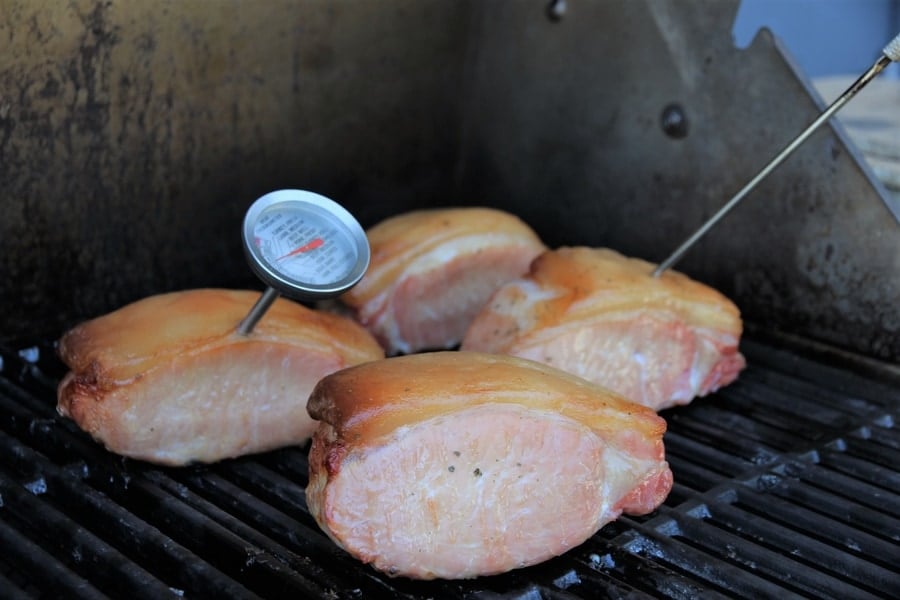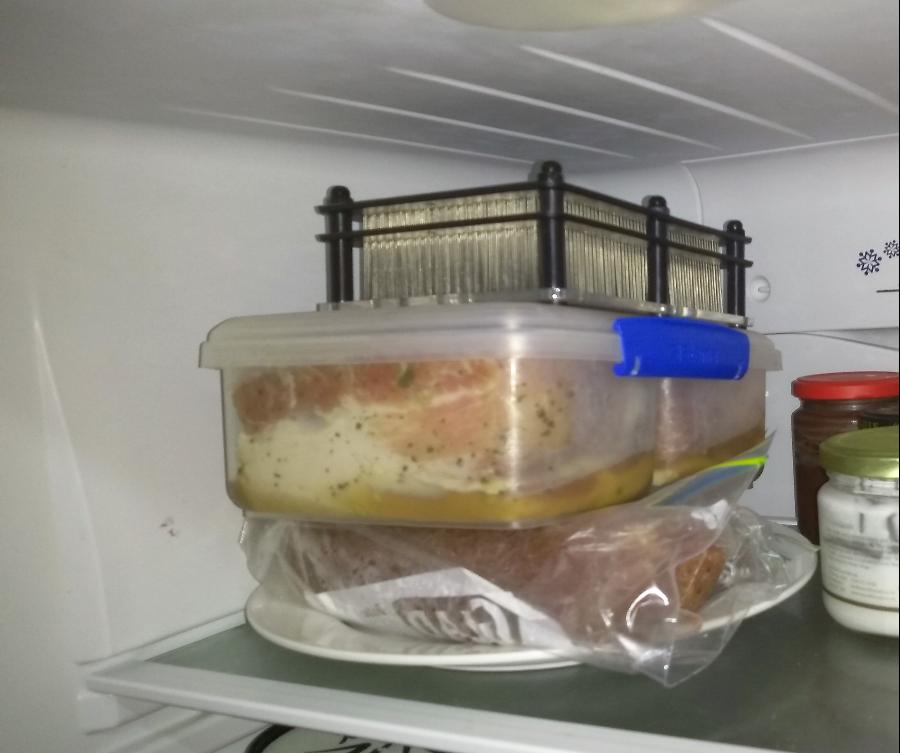This completely depends on your interpretation of curing; some experts say it’s a salt-curing effect, and others say it’s the nitrates/nitrites added to a dry or wet/brine-curing mix.
Hence, the confusion.
Hot Smoking, especially cooking and baking meat until the internal temperature is cooked and safe to eat.
Warm Smoking, which is in between cold smoking and hot smoking, is also “cured” since you are working at a temperature that could develop unwanted bacteria on the meat.
Low and Slow Smoking doesn’t need a “cure” because it only gets seasoned with a salt-based rub, and then it’s cooked/smoked simultaneously.
This includes the Low and Slow Smoking (Baking with Smoke) style, developed by the early European, mainly Czech and German settlers across America.

When you hot-smoke meat, you often want to cure it first to get the most out of it. It’s easy and doesn’t take much effort.
Here are the different types of meat smoking categories and whether it is cured (for more on smoked meats and whether it needs to be cured, I wrote this) or not.
To successfully cure meat, a minimum of 1.5-2% salt is needed to the weight of the meat. However, saturation curing can also be used for dry or wet curing.
3 Ways of Hot Smoking
| Salt Cured | Type of Smoking |
|---|---|
| Yes | Hot Smoking |
| Yes | Fast Hot Smoking (here is how I smoke trout) |
| No (dry rub/seasoned) | Low and Slow Smoking |
Curing the meat before will mean (article on what does cured meat mean) you can hold more moisture and get more flavor from the smoke.
This is what I call ‘fast’ hot smoking, low & slow BBQ smoking (cold vs. hot smoking article) is more about using a rub with sugar to create bark often or just using salt to help keep moisture at the surface of the meat.
When I first learned about hot-smoking fish, I didn’t even realize what the salt and sugar were for when I sprinkled it on the trout. I thought was just for flavor. Then, 20 years later, I can see the difference in curing meat after processing thousands of cured meats.
How to Cure Meat Before Hot Smoking
This applies to fast and slow hot smoking, NOT Low and Slow Smoking (Baking with Smoke) – for this use a dry salt rub.
- Use a salt dry cure or a wet brine
- Refrigerate or keep in a cool area
- Wash cure off
- Place back in the fridge uncovered to form the pellicle
- Hot smoke the meat
The way I think about smoking, especially hot smoking, I break it down into three groups. The first style is fast, hot smoking, low & slow smoking, and slow, hot smoking.
Fast hot smoking is used in a direct heat way, I use this for quick smoking using a portable smoker (how I use a portable smoker for trout) for instance.
Barbecue low and slow smoking is in indirect heat over an extended period until fat renders (outdoor baking).
When I do low & slow smoking, sometimes I will use the curing process overnight, but mainly, I will apply a dry rub from the bark and add new angles of flavor.
When you put the meat in a salt brine, it holds in the moisture, helping a lot during the smoking process.
The other reason for curing when hot smoking is to help for a pellicle (article I wrote on pellicles) on the surface of the meat, not as applicable for Low and Slow Smoking.
If you do this, the pellicle helps the smoke flavor adhere and flavor the meat. I’ve tried smoking different types of meat (red meat and fish) with no pellicle; it really does make a big difference in smoke flavor.
Process – Curing Meat Before Smoking
I will go over the process studied for fast and slow hot smoking (here are some popular tools I wrote an article on).
1. Use a Salt Dry Cure or a Wet Brine
For any curing, always use sea salt that doesn’t have any extras, like anti-caking agents or other additives. Just plain old sea salt or kosher salt.
Additives can give off flavors to the meat, not something you want to experience.
Wet Brining for Fast Hot Smoking
Brine Table for a Simple Reference on Brine Time for Meat
| Meat | Size | Approx Time |
| Seafood Crusticans (mussels, scallops etc) | 0.5 “thick | 2-4 hours |
| Chicken Pieces | Wings/Drums | 1-3 hours |
| Pork Chops, Beef Steak, Red Meat | 1″ thick | 4-8 hours |
| Trout | 0.5-1″ thick | Seafood Crusticans (mussels, scallops etc) |
| Seafood Crusticans (mussels, scallops, etc) | whole | 30-90 mins |
When I started catching and smoking trout, I always used the salt dry-cured method. Actually, I didn’t know about wet brining/salt brining since I was a kid who just wanted to catch fish!
My brother actually prefers smoking trout with no curing, if it’s quality trout he goes for the subtle flavor. He finds the light smoke flavor to be his preference and wants to taste the trout.
If you’re new to smoking meat, using a simple 5% salt brine might be better. Which is 50 grams to /1 quart/1000ml/1L; you can vary it depending on how much meat you bring.
Heat the salt, if need be, in a pot until dissolved, then wait until it cooled to room temperature before putting meat in.
The easiest way to cure before hot smoking is to make this super simple brine, I find.
For fish fillets, because it’s a weak brine, you can leave the fish in the brine overnight if you want (at cooler temperatures, the brine slows down also).
Quick Dry Salt Curing
For the most basic of quick cure, you can use
1/2 teaspoon (2.5 grams) = 1 pounds / 1/2 kg of meat
This is a chef trick for curing meat, the salt will get drawn into the meat in 15-30 minutes. You can then do a quick pellicle drying for an hour and smoke the meat.
The meat can sit in a bowl; you shouldn’t get any liquid coming out of the meat.
I will use this method when I am in a rush and want to do some fast smoking, often using a direct heat method, like the portable smoker (portable smokers in more detail).
Doing this step in a bowl will help you get all the salt onto the meat
Using Nitrites
I don’t use pink curing salt no. 1 for hot smoking fish or salmon, since the brine curing takes a short time and is in the fridge. It then goes straight into the hot smoker.
When I do use pink curing salt I wrote on when I use nitrates/nitrites and when I don’t here), it is 0.25% of the meat weight.
If you want more info, please find a post with links to authority sites here.
Dry Curing Overnight
If you have some time, then you can use the’ equilibrium method’ for dry curing meats for all the meats in the above table having some decent scales.
Basically, you use between 1-2.5% salt weight to the total weight of the meat. The great part of the Equilibrium Method is that you won’t over-salt the meat.
Using a bowel for this method also helps.

Put the meat in a Ziploc bag, and carefully remove as much air as possible before putting it in the fridge.
For the curing below, I put some pork loin I was going to hot smoke in a Tupperware container that was just big enough, you can see some liquid has been drawn out.
The other curing I did was in the Ziploc bags.

2. Refrigerate the Meat & Brine
If you’re using red meat, which is a lot denser, what I do is put it in the salt brine overnight. Then give it at least half a day to dry out before hot smoking.
I generally talk about meat that’s not more than 1 inch thick.
As mentioned, cool temperatures do slow down the brine effect.
3. Wash Cure off
You don’t need to wash the meat for the Dry Curing above.
After wet brining, giving the meat a thorough wash under the tap will remove most of the surface salt. This is a pretty simple process you should find that the meat has become slightly firmer when it has cured.
4. Meat in the Fridge Uncovered to Form the Pellicle
For some reason, a lot of smoking recipes I’ve seen online don’t include this step; this is standard practice for commercial smoking.
It’s simple, but you don’t want to form the pellicle for more than 24 hours. I’ve done this a few times, and you get a leathery exterior to the meat on my smoked chicken breasts!
Fillets of fish that are half an inch thick can take as little as 30 to 60 minutes to form the pellicle. I think it’s best to do it in a fridge, but I have also done it in a protected area from bugs outside in the winter.
5. Remove and Hot Smoke Meat
And that’s about it: get your smoker up to the target temperature, and you’re ready to smoke.
It seems a lot of people think hot smoking is different from cooking. But really it’s the same thing, it’s just that when you are hot smoking your cooking and smoking at the same time.
Related Questions
Do you Have to Cure Meat before Smoking?
You definitely don’t have to cure meat before hot smoking. It’s an optional step. However, if you are using wild game (here is a link to the wild game article category list on this site), it would be advisable to use a salt-wet brine to retain the moisture since the meat will have minimal fat.
Unless I am hot smoking plain sausages, I will always use a salt dry cure or salt wet brine cure.
However, when it comes to cold smoking (article I wrote on cold smoking), you definitely have to cure the meat fully. Cold smoking is a form of preserving through drying the meat. So, a certain moisture level is removed during the curing process to minimize the likelihood of bad bacteria.

Tom Mueller
For decades, immersed in studying, working, learning, and teaching the craft of meat curing, sharing the passion and showcasing the world of charcuterie and smoked meat. Read More
